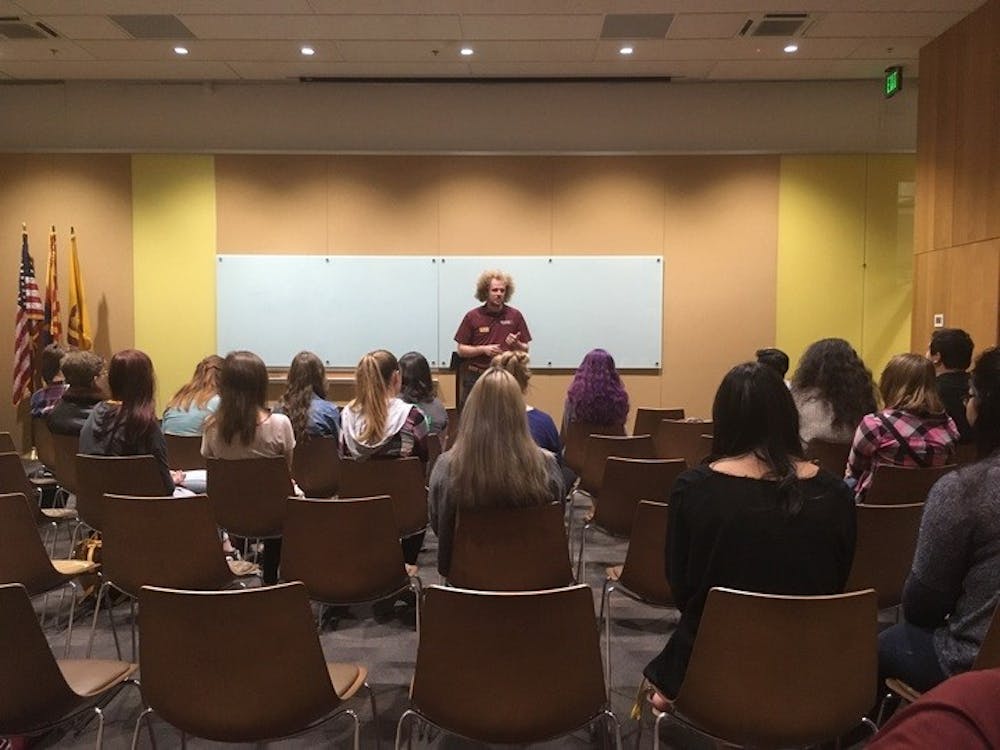For students who normally don’t associate with the politics of Undergraduate Student Government, understanding the complications and intricacies can be overwhelming. In fact, looking at recent elections, we have seen awful turnout numbers. Despite strong campaigns, and higher than usual turnout numbers, the overall percentage of students voting is terribly low.
The issue itself, I believe, stems from the fact that there are so many student governments, and students feel buried by this barrier to make change. Year after year, student government has tried to increase student voter turnout, with very little success.
See Counterpoint: USG needs more inter-university unity to best represent students.
Currently there are four undergraduate presidents, split by campus, each having two vice presidents (one of policy, and the other of services), each accompanied by their own senates. So for example if a student wants student government to take action against tuition increases, well they have to travel to four separate meetings, and all of those senates have to pass a resolution in support or against the item. All those presidents also have a meeting. Wanting to see what was talked about in the last few meetings? four different websites. Talk about a lot of wasted time.
Recent ASU journalism graduate Maria Lopez, who didn't vote in the last Undergraduate Student Government Downtown election expressed frustration. She said that student government should "bring the information they're gathering, explain what that means to individual students and what they're going to do about it."
Her point is well taken, and we need to be able to have a single voice, instead of four different ones. One president could help facilitate discussions in a more organized fashion.
The ASU Faculty Senate has one senate for the entire university, with representatives from all campuses participating. A structure like this would simplify the complicated process.
This makes partnering with other universities much simpler. When we try to coordinate efforts at the capitol, we have one voice, instead of four separate ones which leads to inaction.
This was especially prevalent during the student leader dinners with University of Arizona and Northern Arizona University at the various Arizona Board of Regent meetings. Even in deciding who the student regent would be, many students felt it wasn't transparent enough from the start, and perhaps having one president could help make issues of transparency less prevalent.
There are advantages to having student governments on each campus. But we wouldn’t necessarily need to completely eliminate this model. We could keep the executive boards and the vice presidents who oversee problems in the local community. We could even simplify it more (and save money) by having one vice president for each campus.
Some may be less familiar with the senate caucus meetings. These are the meetings where legislation is discussed. Currently the entire senate meets at each campus for these meetings, which I feel defeats the true purpose of a caucus. A caucus should be a place for members of certain subgroups within the full group can discuss and debate. This way they can strategize what their campus wants and present it before the entire senate.
The appropriations committee could also continue to be divided by campus, with vice chairs who would oversee each campus allocations.
This expedites student concerns to the forefront of our entire student body, regardless of which campus it comes from. Under this model our government could collectively take action on issues such as sexual assault on campus, mental health, and, yes, even tuition.
The current model is chaotic, sporadic and ineffective when it comes to giving students a proper voice. Our student government representatives work tirelessly, attempting to make the current model work, but even with all their efforts, engagement remains low.
It's no fault of their own that students don't actively participate; the model itself is the focal issue. I don’t think we can ever achieve perfection in representation, but I do believe we can always become more perfect, and it starts with centralizing where the decisions are made for the student body.
Reach the columnist at jarwood@asu.edu or follow @jimsthebeast on Twitter.
Editor’s note: The opinions presented in this column are the author’s and do not imply any endorsement from The State Press or its editors.
Want to join the conversation? Send an email to opiniondesk.statepress@gmail.com. Keep letters under 500 words and be sure to include your university affiliation. Anonymity will not be granted.
Like The State Press on Facebook and follow @statepress on Twitter.




